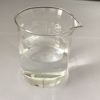High Quality Glycolic Acid at best prices
Key Features
-
Exposure to UV light can cause skin damage. The visible signs of this include:
-
sunspots
-
hyperpigmentation
-
wrinkles
-
increases skin levels of hyaluronic acid, a substance that helps keep the skin moisturized
-
stimulates the production of collagen, the main structural protein in the skin
-
increases fibroblast and keratinocyte proliferation rates, which helpTrusted Source with skin repair and regeneration
-
improves quality of elastin, which promotes skin elasticity
Product Description
How Glycolic Acid Works Glycolic acid has the smallest-sized molecules of all the AHAs.This allows glycolic acid to absorb into the skin and exfoliate it even better than other AHAs. Glycolic acid works by speeding up cell turnover. In other words, it dissolves the bonds that hold skin cells together. In effect, your skin is able to shed dead skin cells more quickly than it would on its own. Glycolic acid triggers your skin to make more collagen as well. Collagen is the protein that makes skin firm, plump, and elastic. It also gives your bones and connective tissues their strength. Your skin makes less collagen as you age. Collagen is also destroyed when you spend too much time in the sun. Using glycolic acid each day can help prevent the breakdown of collagen. What It Does for Your Skin Glycolic acid is a very popular treatment for many reasons, including. Anti-aging: It smooths fine wrinkles and improves the skin's tone and texture. Hydration: It plumps the skin and prevents it from getting dry. Sun damage: It fades dark patches caused by sun damage and protects collagen from the sun. Complexion: It brightens the skin when used regularly. Exfoliation: It prevents ingrown hairs and makes pores appear smaller by helping the skin shed dead skin cells. Acne: It cleans out pores to prevent comedones, blackheads, and inflamed breakouts. Although many sources claim glycolic acid gets rid of scars, this is one thing it simply can't do. Glycolic acid can lighten dark patches left by acne or other wounds. It may also soften the look of raised scars and pitted scars, but it will not make them go away. A better treatment for scars is either a professional strength glycolic acid peel or a different scar treatment altogether. How to Use Glycolic Acid Safely In general, glycolic acid is very safe for your skin and works well. To keep your skin safe, though, there are a few things to know before using glycolic acid. First and foremost, you must wear sunscreen whenever you are using glycolic acid treatments.3 U.S. Food and Drug Administration. Alpha hydroxy acids. Like all AHAs, glycolic acid can make your skin more sensitive to the sun. You don't want to undo all the good your glycolic acid is doing, nor do you want to end up sunburnt. Allow your skin to get used to glycolic acid. If you are using an OTC product, start off by applying it just three times per week for a week or so. If your skin isn't red or irritated, try using it four times a week for a week or two. Keep slowly building up use this way until you're able to use it every day. If at any point your skin becomes irritated, give your skin a rest before trying again. For in-office or in-salon peels, you will likely start off with a lower amount of glycolic acid. If your skin tolerates that well, you will most likely be bumped up to higher strengths for your next peels. Your skin may feel a bit rough after your first few treatments. This is normal and just means that the glycolic acid is working. Unless your skin is irritated, keep using your glycolic acid product. You should slowly start to see smoother, more healthy skin.

